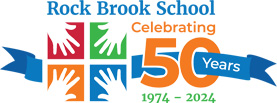 by: Hillary Freeman, Esq. of Freeman Law Offices, LLC
by: Hillary Freeman, Esq. of Freeman Law Offices, LLC
1) FAPE: District’s have an obligation to develop an IEP that addresses the student’s individualized needs. Districts will often try to deny services to a student by saying “we don’t offer that here” or “this is all we offer.” They may also state that the child’s grades are fine so the student is not eligible for a particular program. However, if the student has academic, social/emotional or behavioral needs that impact his/her educational performance, the student is entitled to services and supports to meet that particular need. This may include but may not be limited to speech/language instruction; social skills instruction; occupational therapy for handwriting, sensory needs and/or life skills; physical therapy; behavioral support; counseling; assistive technology and/or augmentative communication.
2) Stay Put: A Child Study Team may not change a child’s program if the parents or guardians request a Mediation with the Office of Special Education Programs (“OSEP”) within 15 calendar days of receipt of the final written notice (in an IEP or otherwise). Notifying the district of your disagreement is not sufficient unless the district is giving you a draft IEP. If the IEP is final, then parents MUST file a Petition for Mediation with OSEP to prevent the proposed IEP from going into effect. This most frequently applies to (but is not limited to) (a) changes in placements/programs; (b) related services being reduced or eliminated; (c) the duration of the “extended school year” program is reduced; and/or (d) eliminating or changing “extended school day” programs.
3) Unilateral Placements or Retaining Private Services : When parents do not believe their son or daughter is making progress (ex. education, social/emotional; behavior; life skills), they often hire private agencies to supplement their child’s educational program or place their child in a private school to compensate or supplement what the district is offering through the IEP. Parents may have a right to seek reimbursement from the local school district for providing those services. Unless there is an emergent situation, parents MUST provide the district with written notice of their intent to privately retain services 10 (business) days in advance of hiring the outside provider. Otherwise, reimbursement may be reduced or denied.
4) Independent Educational Evaluations (“IEE”): Once a student has been classified, the district’s Child Study Team has a legal obligation to administer a reevaluation every three years or more often if deemed necessary. Upon completion of an evaluation, parents may request an IEE at public expense if they disagree with the results of the district’s evaluation. Districts however, may no longer limit the parents’ right to an IEE by insisting that it first be permitted to conduct the evaluation in an area not already assessed by the initial evaluation or reevaluation. The district must pay for the IEE unless it requests a Due Process hearing within 20 calendar days and is able to prove that its evaluation is appropriate.
5) Observations by Independent/Private Evaluators: For any independent evaluation, whether purchased at public or private expense, the school district must allow the evaluator to observe the student in the classroom or other educational setting upon request. The district may impose reasonable limitations with respect to the duration and scope of an observation by an independent or private evaluator. However, such limitations must also be imposed on the district when the district conducts its own evaluation. The district’s policy may not be limited to outside evaluators only.
6) Goals: It is very important that your child’s IEP goals and objectives are measurable. It is very difficult to establish that a child has not made progress with vague wording. When the goals are specific, observable and measurable, the IEP team (which includes the parents and/or guardians) to measure the student’s progress. The IEP must also state how the child’s parents will be informed of their child’s progress towards the annual goals and what criteria will be set for the child to have “mastered” each goal by the end of the year.
A) Vague Goal: Johnny will act in a socially appropriate manner.
B) Measurable Goal: Johnny will initiate a conversation with a same aged peer in the classroom setting three out of five opportunities to do so as measured by collected data.
7) Transition Services: IEPs must include transition services when the student reaches age 16 or younger as deemed appropriate by the IEP team. Appropriate transitions plans are designed to help the student learn academic and functional skills that they will need to be successful in the post secondary environment (such as college, vocational program, the account for the student’s strengths, preferences and interests after high school and then address the student’s academic and functional achievement to help the student be successful in the postsecondary environment. The plan should include instruction, related services, community experiences, the development of employment and other post-school adult living objectives, and, when appropriate, acquisition of daily living skills and functional vocational evaluation.
8) Length of School Day and/or School Year: The length of school day and/or school year shall be offered for the same length of time as established for non-disabled students. However, the IEP team may extend or shorten the length of the school day or year based on the needs of the student.
9) Graduation: Graduation is considered a “change in placement” that triggers the 15 day clock to contest the IEP. If your child is (a) under the age of 21; (2) has not mastered all of his or her IEP goals; or (c) still has functional/academic needs that have not been addressed, the student may be entitled to continued services from the school district either in the school environment or another setting.
10) Partial Agreement with IEP: Parents may consent to implement part of the proposed program without waiving their rights to contest the balance of the proposed program. If that situation arises, parents and/or guardians should ask the Child Study Team would continue working with them to reach a resolution. If not, then the parents should request a Mediation from OSEP (not the district) within 15 calendar days to invoke their “stay put” rights and maintain the IEP that is currently in effect until the dispute can be resolved. (See above).
Thank you Hillary Freeman for serving as guest blogger.
You can contact Hillary by visiting www.freemanlawoffices.com


